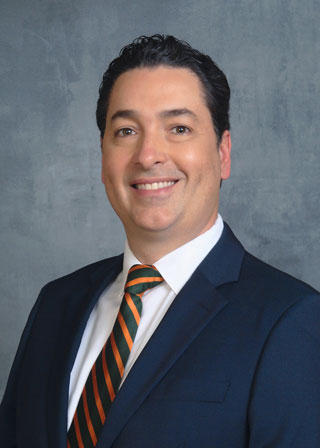Call it his Kitty Hawk moment. His Spirit of St. Louis special.
If all goes well at a makeshift airfield in Hialeah early next month, Tomas Pribanic will write a new chapter in aviation—and, perhaps, entrepreneurial history.
That’s when the University of Miami College of Engineering Ph.D. student will test his invention of a new pilotless aircraft powered by ion propulsion.
In the “Star Trek” episode Spock’s Brain, chief engineer Montgomery Scott gazed in awe at an ion-powered alien spacecraft on an intercept course with the Enterprise, describing the ship as a “beauty” and saying he had never seen anything like it.
But in reality, ion propulsion isn’t solely the stuff of science fiction. An advanced form of power that uses electricity to accelerate ions and produce small but long-lasting thrust, it is the preferred method of power for engineers who use it to keep satellites in their proper orientation and to propel deep-space probes farther and faster than any other form of thrust.
The technology’s one glaring disadvantage, however, is that it works best only in the vacuum of space, free from Earth’s powerful gravitational pull.

Pribanic, who started building and flying model airplanes when he was 12, says he has found a way to overcome that obstacle. After months of extensive research, he has applied ionic thrust to drones on Earth, allowing the autonomous vehicles to operate in the atmosphere just as efficiently—and silently—as they would if they flew in outer space.
The Ph.D. student will test his five-square-foot, ion-powered prototype at Amelia Earhart Park in March, putting the vehicle through its paces in outdoor conditions after months of indoor vertical takeoffs and landings at the Doral-based Undefined Technologies lab he founded and now leads.
An electric propulsion expert who has worked for some of the largest aerospace companies in the nation, Pribanic said his Air Tantrum technology could transform the field of transportation. “The prototype is light weight, produces zero carbon emissions, and the technology is adaptable,” he said. “But the biggest gamechanger is that it generates silent propulsion.”
And that, he said, should help spur increased usage of drones, which are notorious for producing loud, high-pitched noise—as high as 96 decibels, according to Pribanic. He noted a recent NASA study that found that the buzzing sound produced by drones is more annoying to humans than noises generated by cars and trucks, even when the noises are at the same volume.
His technology is projected to generate noise below 70 decibels, which would fall under the threshold established by a number of municipal noise ordinances.
Certain corporations are already looking at ways to use unmanned vehicles to improve their operations. “Major retailers like Walmart and Amazon and package carriers such as FedEx and UPS have begun experimenting with drones,” said Harihara Prasad Natarajan, an associate professor of management at the Miami Herbert Business School. “They are exploring the possibility of using drones for a variety of supply chain activities including counting physical inventory, moving packages within the warehouse, and even for last-mile deliveries, especially in remote, inaccessible areas.”
With a new start-up, Pribanic plans to commercialize his technology and incorporate it into the existing drone market focusing on urban cargo, delivering everything from online shopping packages and groceries to vital medicines and COVID-19 test kits. He enters a thriving industry, as the global drone market will grow from
$22.5 billion in 2020 to more than $42 billion in 2025, according to the Drone Market Report 2020.
Pribanic has been mentored by College of Engineering materials scientist Xiangyang Zhou, and has worked with Bob Williamson, entrepreneur in residence at the University’s Office of Technology Transfer, to patent and market his new technology.
“Tomas took a known technology and modified it to become a practical, yet quiet way to provide lift. We shouldn’t be surprised if he fundamentally changes the drone industry,” Williamson said.
The aerospace engineering student’s venture into ion propulsion almost didn’t happen. “I was experimenting with other forms of thrust before and hadn’t really done much research in ionic thrust because it wasn’t viable for atmospheric conditions on Earth,” Pribanic said. “But I realized that achieving ion propulsion in our atmospheric was a big challenge. I saw the tremendous potential it offered. Now, we’re in the final stages of achieving a lofty goal.”

